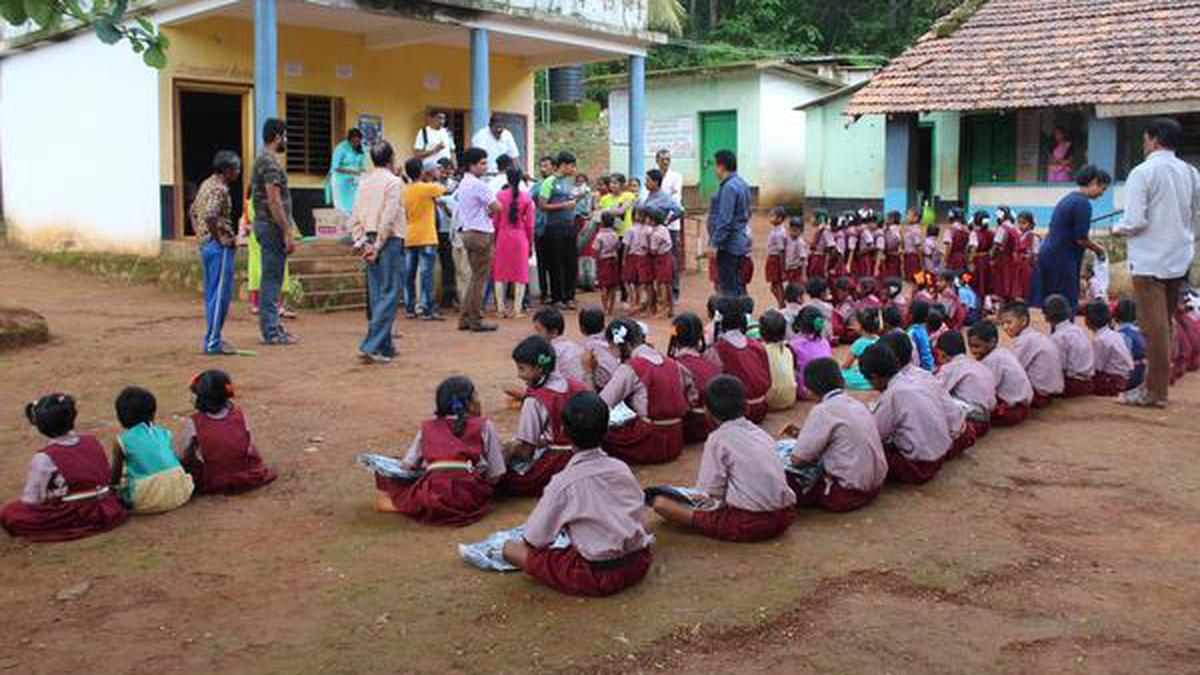ASER 2024

- 30 Jan 2025
In News:
The Annual Status of Education Report (ASER) 2024, released by the NGO Pratham, provides an insightful assessment of schooling and foundational learning levels across rural India.
Conducted in 17,997 villages across 605 districts, the survey reached over 6.49 lakh children aged 3–16 and tested more than 5 lakh for reading and arithmetic.
About ASER:
- Type: Household-based, citizen-led survey
- Initiated: 2005 (Annual till 2014; biennial since 2016)
- Scope:
- Tracks school enrollment (ages 3–16)
- Assesses basic reading and arithmetic skills (ages 5–16)
- Includes children in and out of school, across government, private, and informal institutions
- 2024: Introduced digital literacy assessment for ages 14–16
Key Findings of ASER 2024:
1. Enrollment Trends
- Pre-primary (Ages 3–5):
- Overall enrollment improved significantly.
- 3-year-old enrollment rose from 68.1% in 2018 to 77.4% in 2024.
- Anganwadis remain primary providers for 3–4-year-olds, while private preschools dominate among 5-year-olds.
- Elementary (Ages 6–14):
- Overall enrollment slightly declined from 98.4% (2022) to 98.1% (2024).
- Government school enrollment fell from 72.9% (2022) to 66.8% (2024).
- Private school enrollment, steadily rising since 2006, is regaining ground post-pandemic.
- Adolescents (Ages 15–16):
- Dropout rates fell from 13.1% in 2018 to 7.9% in 2024.
- However, female dropout (8.1%) remains higher than male.
2. Learning Outcomes
- Reading Skills:
- Std III: 23.4% in government schools could read Std II-level text (up from 16.3% in 2022).
- Std V: 44.8% could read Class II text, nearly matching 2018 levels (44.2%).
- Private schools yet to recover fully to pre-pandemic levels (59.3% in 2024 vs. 65.1% in 2018).
- Arithmetic Skills:
- Std III: 33.7% could perform basic subtraction (up from 25.9% in 2022, exceeding 28.2% in 2018).
- Std VIII: 45.8% could solve basic problems, showing consistent improvement.
Trend: Arithmetic recovery has outpaced reading, with government schools showing faster gains than private ones.
3. Digital Literacy (Ages 14–16)
- Access: Nearly 90% have access to smartphones.
- Ownership:
- 36.2% of boys own smartphones vs. 26.9% of girls.
- Usage:
- 82.2% use smartphones; only 57% for education, but 76% for social media.
- Safety Awareness:
- 62% know how to block/report users, and 55.2% can make profiles private.
4. School Infrastructure & Observations
- Attendance:
- Student attendance improved from 72.4% (2018) to 75.9% (2024).
- Teacher attendance rose from 85.1% to 87.5% in the same period.
- Facilities:
- Usable girls' toilets increased from 66.4% to 72%.
- Drinking water availability rose from 74.8% to 77.7%.
- Playground access remains stable (~66%).
- Learning Resources:
- Use of non-textbook reading materials (e.g., stories, folk tales) rose from 36.9% to 51.3%.
- Foundational Literacy and Numeracy (FLN):
- 80%+ of schools implemented FLN activities.
- 75% had at least one FLN-trained teacher.
Significance of Elementary Education:
- Foundational for Learning: Builds core skills vital for academic progression.
- Social Development: Encourages interaction, empathy, teamwork, and communication.
- Emotional and Cognitive Growth: Stimulates curiosity, motivation, and self-confidence.
- Economic Multiplier: Strong early education contributes to long-term national productivity and innovation.
Persistent Challenges:
- Infrastructure Deficits:
- Over 1.5 lakh schools lack functional electricity.
- 67,000 schools lack toilets; only 33.2% have usable disabled-friendly toilets.
- Technology Divide: Only 43.5% of government schools have computers vs. 70.9% in private schools.
- Human Resource Gaps: Around 1 lakh schools function with only one teacher.
- Social Barriers:
- Caste, class, rural-urban, and gender divides restrict equal educational access.
- Language barriers affect non-Hindi/English speakers due to lack of regional textbooks.
Key Government Initiatives:
- National Education Policy (NEP) 2020
- PM SHRI Schools
- Sarva Shiksha Abhiyan
- Mid-Day Meal Scheme
- Beti Bachao Beti Padhao
- National Programme on Technology Enhanced Learning (NPTEL)
- PRAGYATA (Guidelines for digital education
Way Forward:
- Early Interventions: Focus on retention among disadvantaged groups.
- Inclusive Learning Models: Introduce flexible/part-time programs for working children.
- Supplementary Literacy: Target out-of-school and dropout children with bridge courses.
- Local Governance: Establish District School Boards for planning and accountability.
- Infrastructure Expansion: Ensure school access within 1 km in underserved regions.
- Parental Awareness: Launch community campaigns on education's long-term benefits.
